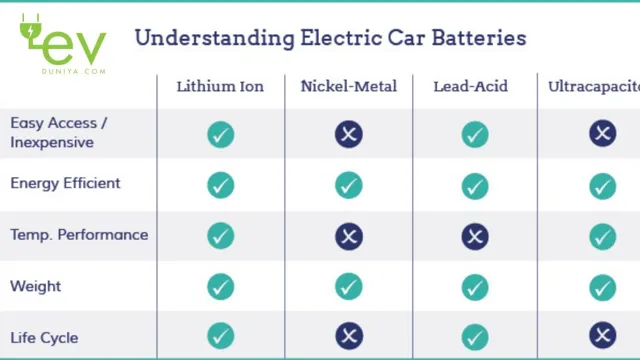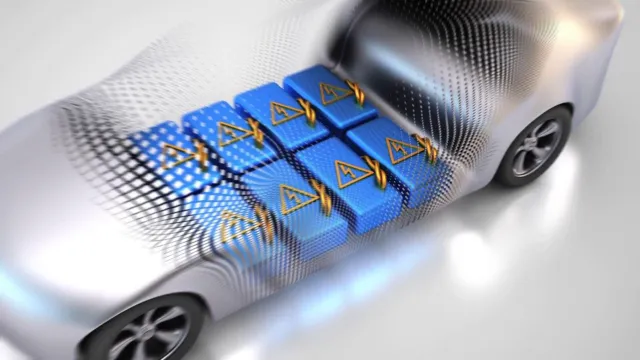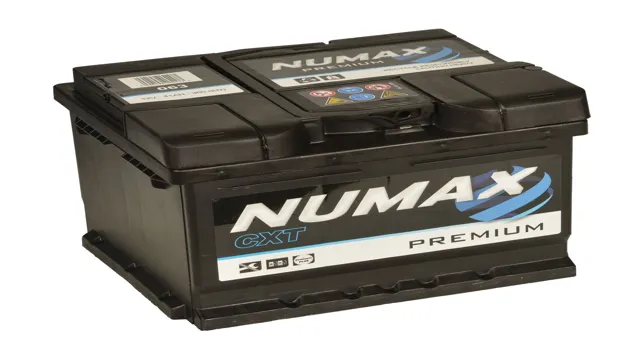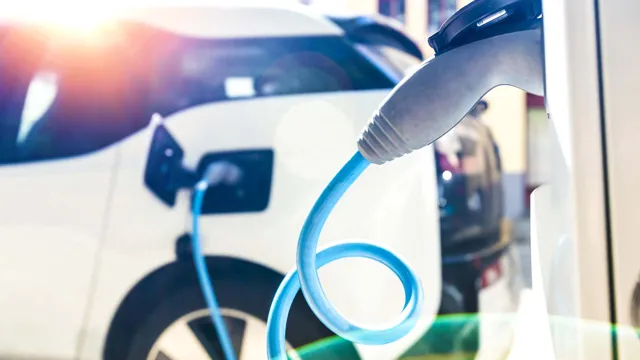Revolutionizing the Automotive Industry: The Electric Car Battery Recycling Process
Electric vehicles (EVs) are becoming more popular as consumers look towards environmentally-friendly transportation options. However, one of the concerns surrounding EVs is the disposal of their batteries. This is where electric car battery recycling comes into play.
After all, what happens to the battery at the end of its lifespan? This is where the recycling process comes in. Battery recycling is the process of reclaiming valuable materials from batteries that can no longer be used. Recycling electric car batteries is important for several reasons: it reduces the amount of waste that ends up in landfills, it conserves natural resources, and it can even provide a source of income.
In this blog post, we’ll take a closer look at the electric car battery recycling process and how it helps to sustainably manage waste.
Why is Battery Recycling Important?
The electric car battery recycling process is extremely important for several reasons. Firstly, electric car batteries contain valuable materials that can be reused, such as nickel, cobalt, and lithium. By recycling these batteries, we can significantly reduce our reliance on mining for these valuable materials, which can be both environmentally and socially damaging.
Furthermore, recycling batteries also reduces the amount of waste being sent to landfill, which can contain toxic elements harmful to the environment. Additionally, properly recycling batteries can also reduce the amount of greenhouse gas emissions associated with their production. Ultimately, with more and more electric cars being produced and sold, the need for efficient battery recycling processes becomes increasingly crucial.
It is important that we continue to improve and develop these processes to ensure the long-term sustainability of electric vehicles.
Environmental Impact of Batteries
Battery recycling is an essential process that helps reduce the impact of batteries on the environment. Batteries contain hazardous materials such as lead, cadmium, and mercury, which can be harmful to human health and the environment. When batteries are not disposed of properly, these toxic chemicals can seep into the soil and water systems, affecting both humans and wildlife alike.
Recycling batteries can prevent this from happening and also helps conserve natural resources. By recycling batteries, the materials such as metals, plastics, and chemicals can be extracted and reused in the production of new batteries or other products. Furthermore, recycling batteries can also reduce greenhouse gas emissions as producing new batteries requires a large amount of energy.
In conclusion, battery recycling is a crucial step towards reducing environmental impact and ensuring a sustainable future for our planet.
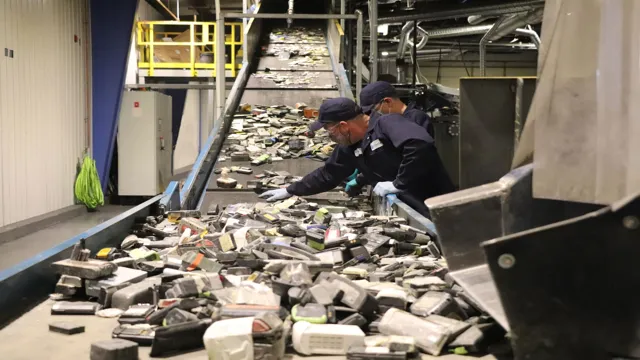
Resource Conservation through Recycling
Battery recycling is vital for resource conservation, and there are several reasons why it’s important. Firstly, batteries contain hazardous materials that can cause significant harm to the environment if not disposed of properly. Some of the toxic substances found in batteries include lead, cadmium, and mercury.
These chemicals can seep into the soil and pollute the water supply, leading to serious health and environmental problems. By recycling, these harmful substances are kept out of landfills and properly disposed of. Additionally, recycling helps to conserve finite resources by recovering valuable metals and materials that can be reused.
For example, many batteries contain valuable metals such as cobalt, nickel, and lithium, which can be extracted and used in the production of new batteries. This process helps to reduce the need for mining new materials, which can be both costly and environmentally damaging. Furthermore, recycling batteries can also save energy.
The process of extracting and refining raw materials is both energy-intensive and resource-consuming. By recycling, we can use less energy to extract the same amount of materials, further reducing our impact on the environment. In conclusion, battery recycling is a crucial component of resource conservation and environmental responsibility.
As consumers, it’s essential to take the necessary steps to dispose of batteries safely and effectively. By doing so, we can minimize our impact on the environment, conserve natural resources, and protect our community’s health and safety.
How are Electric Car Batteries Recycled?
When an electric car battery reaches the end of its lifecycle, recycling is the best way to dispose of it, both environmentally and economically. The electric car battery recycling process usually involves three main steps, including dismantling, breaking down, and separating the components. The first step is to dismantle the battery, whereby the battery pack is disassembled, and the plastic casing separated.
Next, the battery is broken down into smaller parts, and the liquid, metals, and materials are separated and collected. Finally, the liquid electrolyte, plastic, and metals are sent to their respective recycling plants for further processing. The recycling process is essential in conserving natural resources, reducing greenhouse gas emissions, and ensuring a sustainable future for generations to come.
Therefore, always ensure that you find a qualified and certified battery recycling company to dispose of your electric car battery responsibly.
Battery Collection and Sorting
Electric car batteries may seem like a headache to dispose of, but recycling them is easier than you might think. The first step in recycling an electric car battery is to collect it. Thankfully, there are many collection points that allow people to dispose of their used batteries.
Once collected, the batteries then go through a sorting process that separates reusable materials from hazardous materials. The reusable materials, such as cobalt and nickel, are then melted down and sold to manufacturers who will use them to create new batteries. The process of recycling batteries not only helps the environment by reducing pollution, but it also makes it easier for manufacturers to access the essential materials needed for new battery production.
So, the next time you see a collection point for electric car batteries, consider disposing of your old battery there, and you’ll be contributing to a cleaner and more sustainable future.
Battery Dismantling and Shredding
When it comes to recycling electric car batteries, the process can be quite complex. Before the actual recycling process can begin, the batteries must be dismantled and shredded. This involves removing the battery cells from the casing of the battery pack and then shredding the cells into small pieces.
From there, the pieces are treated with chemicals to extract valuable metals such as cobalt, lithium, nickel, and more. These metals can then be repurposed for use in new batteries or other products such as electronics. The recycling process not only helps to conserve valuable resources but also reduces waste and pollution.
So, the next time you’re wondering what happens to those old electric car batteries, rest assured that they’re being responsibly dismantled and recycled to help create a better, more sustainable future.
Chemical Extraction and Refining
Recycling electric car batteries is a crucial step towards sustainability, as these batteries contain valuable materials that can be recycled and reused. The process involves chemical extraction and refining, where technicians use specialized equipment to break down the batteries into their component parts. The first step is to remove the plastic casing and wiring, exposing the battery cells.
The cells are then drained of their electrolyte fluid and heated to separate the different metals inside. Once the metals are separated, they can be purified and made into new batteries or other products. During this process, technicians take care to minimize the release of any toxic byproducts, such as lead or cadmium, that may be present.
By recycling electric car batteries, we reduce waste, conserve resources, and make electric cars more sustainable in the long run.
Future Trends in Battery Recycling
As the demand for electric cars continues to rise, the need for an efficient electric car battery recycling process becomes more important than ever. Battery materials such as lithium, cobalt, and nickel can be harmful to the environment, so it is crucial to recycle them properly. One trend in battery recycling is the move towards closed-loop systems, where batteries are designed to be recycled at the end of their lifespan.
Another trend is the development of new technologies to make the recycling process more efficient, such as using high-temperature furnaces to recover valuable materials from the batteries. Recycling companies are also partnering with automakers to establish recycling programs and find ways to extract more value from recycled materials. Overall, the future of battery recycling looks promising, with advancements in technology and a growing commitment to sustainability.
Advancements in Battery Design for Recycling
As the demand for more efficient and sustainable energy storage solutions increases, the advancements in battery design for recycling are gaining more attention. One of the future trends in battery recycling is the development of closed-loop systems. In closed-loop systems, batteries are designed to be easily disassembled and their components reused or recycled.
This approach reduces waste and energy consumption during the recycling process and promotes a more circular economy. Another trend is the use of circular materials in battery production, made from recycled metals extracted from old batteries. This reduces the need for new mining and reduces environmental pollution.
In summary, future battery designs aim to be more sustainable, recyclable, and efficient while reducing the impact on the environment.
Emerging Technologies in Battery Recycling
As the demand for sustainable and renewable energy sources continues to increase, battery recycling is becoming increasingly important. Emerging technologies are being developed to help meet this demand, such as the use of artificial intelligence and machine learning in improving the efficiency of battery recycling processes. There is also growing interest in the use of biodegradable materials in batteries, which would make them less harmful to the environment once they reach the end of their life.
Additionally, there is research being done into the use of new technologies for extracting valuable materials from batteries, such as lithium and cobalt, which are essential for producing new batteries. Overall, the future of battery recycling looks promising, with new innovations emerging that will help to create a more sustainable and environmentally friendly energy ecosystem.
Conclusion
Recycling electric car batteries is like giving them a second life. Not only does it help prevent environmental damage caused by improper disposal, but it also allows for valuable materials to be reused and repurposed. It’s like turning an old, forgotten battery into a shiny, new one with even more potential.
So let’s support the recycling process and give these batteries the second chance they deserve – who knows, they may just end up powering the next big thing!”
FAQs
What is the electric car battery recycling process?
The electric car battery recycling process involves recovering reusable materials from the battery such as cobalt, lithium, and nickel to reduce waste and minimize environmental impact.
How does the electric car battery recycling process work?
The process involves disassembling the battery, sorting the components by metal type, and using various techniques to extract the reusable materials, which can be repurposed for new batteries or other products.
Why is electric car battery recycling important?
Electric car battery recycling is important to reduce waste and environmental impact. It also helps secure a sustainable supply of materials for future electric cars.
Can all components of an electric car battery be recycled?
Not all components can be recycled, but the majority of the battery can be reused or repurposed. Some materials, such as carbon and plastic, may be too difficult or costly to recycle effectively.

